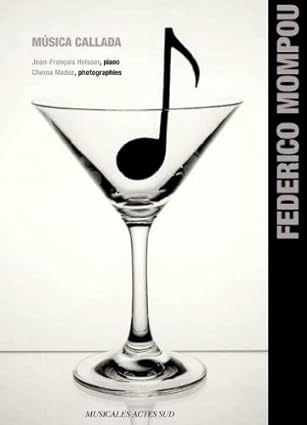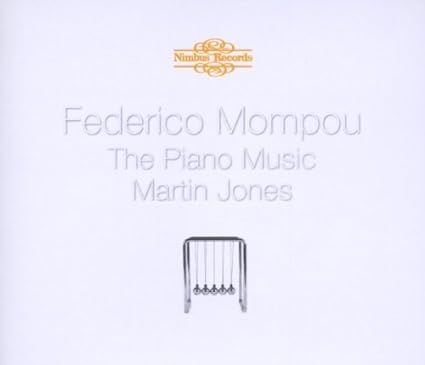
Haskell Small's take. Small has a few unique traits here. First, like Mompou, he's a composer-pianist, and has recorded not only this disc, but some Bach, as well as his own music. Second, he uses a Blüthner. Third, he takes a long time to play the work, clocking in at about 74'. Right from the opening Angelico movement, which is drawn out and makes expert use of silences between notes, Small takes his time. Small also holds some notes and chords seemingly as long as possible. His closely recorded Blüthner brings a different sound, with quicker decays up top and a more relaxed sound in the middle and lower registers. In the Lento - molto cantabile of the first book, the repeated bass note opening sounds appreciably different, less full but more tonally diverse, adding a little something extra. The following Semplice and Lento both have more cutting upper register playing while managing to keep things simple and sparse. In the second book, the Tranquilo - tres calme piece starts out that way, but the amplified by the close recording, nearly erupts into something more biting before quickly fading away. The following Severo - serieux very much lives up to its designation, with the added bass texture again adding to the allure of the playing. The Lento - plaintif in the same book is tense and searching, but it almost sounds generic and aimless, but I mean that in a good way; it's musical wandering. In the Luminoso of the third book, Small pedals expertly to create a more beautiful sound, accentuating Mompou's harmonic invention. In the final book, Small's playing becomes sort of rarified, or transcendent, but it is also personal, and less austere and abstract than some prior versions. Too, as in the first Lento molto of the book, he displays an almost incredibly soft touch with some notes, playing pianissimo as quiet as anything I've heard from Yamane or Gorus.
Small pulls off something of a unique feat here. Even though his version is longer than normal, and even though Small uses pauses and silences and sustained notes expertly, his version ends up
feeling shorter than prior versions. This work is not especially high on excitement in a standard piano music sort of way, but Small's expressiveness and attention to the minutest of details captivates. This was an afterthought recording that I almost didn't buy, but it turns out to be masterful.





















